French Azilum (French : Asile français) was a planned settlement built in 1793 in Bradford County, Pennsylvania for French refugees fleeing the French Revolution and slave uprisings in Saint-Domingue. [1] Several influential Philadelphians, including Stephen Girard, Robert Morris and John Nicholson, Pennsylvania's comptroller general, were sympathetic to the exiles, and also saw a chance to profit financially.
In 1793, they aided in the purchase of 1,600 acres (6 km2) of land in northeastern Pennsylvania, which was then wilderness. An area of 300 acres (1.2 km2) was laid out as a town plot including a 2-acre (8,100 m2) market square, a grid of broad streets and 413 lots, approximately one-half acre each. About 30 log houses were built. A small number of exiles arrived that fall. Some were royalists, loyal to King Louis XVI (guillotined in January 1793) and thus fleeing imprisonment and possible death during the French Revolution. Others came from the French colony of Saint-Domingue (Haiti) where slave uprisings had broken out in 1791, inspired by the Declaration of the Rights of Man and of the Citizen (1789) of the French Assembly. According to legend, Marie Antoinette (continued as titular Queen of France until guillotined in October 1793) and her two surviving children were to settle here. Soon several small shops, a schoolhouse, a chapel and a theater appeared in the market square. A gristmill, blacksmith shop and a distillery were built, cattle and sheep were kept, and fruit trees and gardens were planted.
The largest building in the colony, La Grande Maison, a two-story log structure, stood 84 feet (26 m) long and 60 feet (18 m) wide. Unproven rumors see it as intended for the Queen. Major social gatherings took place there, and both Talleyrand (who lived in the United States from 1794 to 1796) and Louis Phillipe (who visited Pennsylvania in 1797 and later became King of the French from 1830 to 1848) were entertained here.
The quasi-aristocratic French court did not last. In the late 1790s, after Morris and Nicholson went into bankruptcy and money from French sources dried up, many of the exiles moved to southern cities including Charleston, Savannah and New Orleans. Some returned to Saint-Domingue, and after Napoleon (in power from 1799) made it possible for exiles to return to France, many did. The LaPortes, Homets, LeFevres, Brevosts and D'Autremonts remained in Pennsylvania and settled in local communities. By 1803 French Azilum had passed into history.
None of the more than 50 structures of French Azilum remain. The house and garden plots were absorbed into larger tracts of farmland.
The LaPorte House, built in 1836 by the son of one of the founders of the colony, includes delicately painted ceilings and interior decor which reflect the French influence, and functions as a house museum. An original foundation has been left exposed for public viewing and a reconstructed, relocated log cabin, circa 1790, also serves as a small museum. Guided tours of the LaPorte house take place seasonally, as well as a self-guided tour of over 20 acres (81,000 m2) of the original settlement, including several outbuildings of the LaPorte Farm.
French Azilum is managed by French Azilum, Inc., a non-profit corporation founded in 1954, and is administered by the Pennsylvania Historical and Museum Commission. [2]
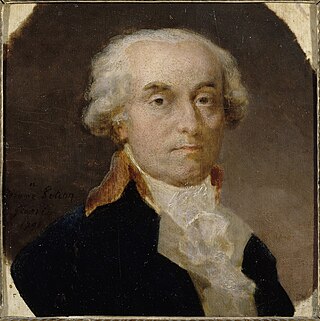
Jérôme Pétion de Villeneuve was a French writer and politician who served as the second mayor of Paris, from 1791 to 1792, and the first regular president of the National Convention in 1792. During the French Revolution, he was associated with the moderate Girondins, and voted against the immediate execution of Louis XVI at the king's trial in January 1793, though he supported a suspended sentence. This led to Pétion's proscription by the Convention alongside other Girondin deputies following the radical insurrection of 31 May – 2 June 1793, and ultimately his suicide together with fellow-Girondin François Buzot while evading arrest during the Terror.
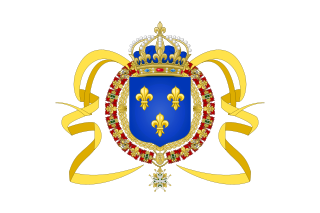
Saint-Domingue was a French colony in the western portion of the Caribbean island of Hispaniola, in the area of modern-day Haiti, from 1697 to 1804. The name derives from the Spanish main city on the island, Santo Domingo, which came to refer specifically to the Spanish-held Captaincy General of Santo Domingo, now the Dominican Republic. The borders between the two were fluid and changed over time until they were finally solidified in the Dominican War of Independence in 1844.

Divisional-General Charles Victoire Emmanuel Leclerc was a French Army officer who served during the French Revolutionary Wars. He was the husband of Pauline Bonaparte, the sister of Napoleon. In 1801, Leclerc was sent to Saint-Domingue, where invasion forces under his command captured and deported Haitian leader Toussaint Louverture to France as part of an unsuccessful attempt to reassert French control over Saint-Domingue and reinstate slavery in the colony. Leclerc died of yellow fever during the campaign.

In the context of the history of slavery in the Americas, free people of color were primarily people of mixed African, European, and Native American descent who were not enslaved. However, the term also applied to people born free who were primarily of black African descent with little mixture. They were a distinct group of free people of color in the French colonies, including Louisiana and in settlements on Caribbean islands, such as Saint-Domingue (Haiti), St. Lucia, Dominica, Guadeloupe, and Martinique. In these territories and major cities, particularly New Orleans, and those cities held by the Spanish, a substantial third class of primarily mixed-race, free people developed. These colonial societies classified mixed-race people in a variety of ways, generally related to visible features and to the proportion of African ancestry. Racial classifications were numerous in Latin America.
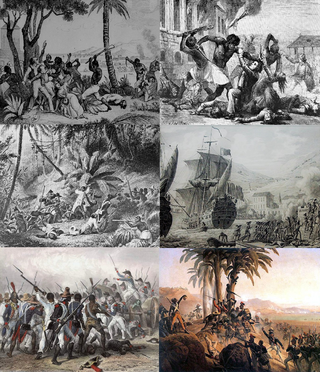
The Haitian Revolution was a successful insurrection by self-liberated slaves against French colonial rule in Saint-Domingue, now the sovereign state of Haiti. The revolution was the only known slave uprising in human history that led to the founding of a state which was both free from slavery and ruled by non-whites and former captives.
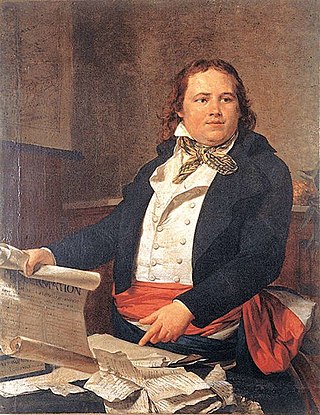
Léger-Félicité Sonthonax was a French abolitionist and Jacobin before joining the Girondist party, which emerged in 1791. During the French Revolution, he controlled 7,000 French troops in Saint-Domingue during part of the Haitian Revolution. His official title was Civil Commissioner. From September 1792, he and Polverel became the de facto rulers of Saint-Domingue's non-slave population. Because they were associated with Brissot’s party, they were put in accusation by the convention on July 16, 1793, but a ship to bring them back in France didn’t arrive in the colony until June 1794, and they arrived in France in the time of the downfall of Robespierre. They had a fair trial in 1795 and were acquitted of the charges the white colonists brought against them. Sonthonax believed that Saint-Domingue's whites were royalists or separatists, so he attacked the military power of the white settlers and by doing so alienated the colonial settlers from their government. Many gens de couleur asserted that they could form the military backbone of Saint-Domingue if they were given rights, but Sonthonax rejected this view as outdated in the wake of the August 1791 slave uprising. He believed that Saint-Domingue would need ex-slave soldiers among the ranks of the colonial army if it was to survive. In August 1793, he proclaimed freedom for all slaves in the north province. His critics allege that he was forced into ending slavery in order to maintain his own power.
Jean-François Papillon was one of the principal leaders in the Haitian Revolution against slavery and French rule. He led the initial uprising of enslaved workers and later allied with Spain against the French.
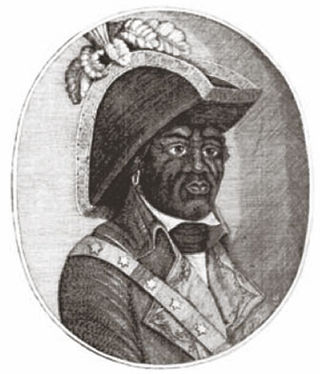
George Biassou was an early leader of the 1791 slave rising in Saint-Domingue that began the Haitian Revolution. With Jean-François and Jeannot, he was prophesied by the vodou priest Dutty Boukman to lead the revolution.
Étienne Polverel (1740–1795) was a French lawyer, aristocrat, and revolutionary. He was a member of the Jacobin club. In 1792, he and Léger Félicité Sonthonax were sent to Saint-Domingue to suppress the slave revolt and to implement the decree of April 4, 1792, that gave equality of rights to all free men, regardless of their color.

Alexandre Francois Auguste de Grasse, known as Auguste de Grasse and Comte de Grasse-Tilly, was a French career army officer. He was assigned to the French colony of Saint-Domingue in 1789, where he married in Cap Français, and acquired a plantation and 200 slaves before the Haitian Revolution. Following the Royal Navy's defeat of the French fleet in Saint-Domingue in 1793, de Grasse was allowed to resign his commission and leave with his family and in-laws for Charleston, South Carolina.

Philippe François Rouxel, viscount de Blanchelande was a French military officer, nobleman and colonial administrator who served as the governor of Saint-Domingue from 1790 to 1792. He was born on 21 February 1735 in Dijon, France, and subsequently enlisted in the French Royal Army, rising to the rank of Maréchal de camp by 1781. In that year, Blanchelande led a French expeditionary force which captured Tobago from the British. He was subsequently made governor of the island, serving from 1781 to 1784.
The War of Knives, also known as the War of the South, was a civil war from June 1799 to July 1800 between the Haitian revolutionary Toussaint Louverture, a black ex-slave who controlled the north of Saint-Domingue, and his adversary André Rigaud, a mixed-race free person of color who controlled the south. Louverture and Rigaud fought over de facto control of the French colony of Saint-Domingue during the war. Their conflict followed the withdrawal of British forces from the colony earlier during the Haitian Revolution. The war resulted in Toussaint taking control of the entirety of Saint-Domingue, and Rigaud fleeing into exile.

Marguerite Brunet, known by her stage name of Mademoiselle Montansier, was a French actress and theatre director.
Jacques Garnier, also called Garnier de Saintes, was born in Saintes on 30 March 1755, and drowned in the Ohio River in 1817 or 1818 was a French politician, a lawyer and a revolutionary.
Jean Kina, was a slave in the French colony of Saint Domingue who became a counterrevolutionary military leader in the Haitian Revolution and French Revolutionary Wars.
Club de l'hôtel de Massiac or the Massiac Club was a political club in Paris in France during the French Revolution. The club was formed on 20 August 1789 and dissolved after the Haitian Revolution in August 1791.
François-Thomas Galbaud du Fort was a French general who was briefly governor-general of Saint-Domingue. He arrived at a time when the planters were hostile to the new French First Republic with its ideals of equality of all men, when many slaves had left the plantations and were fighting for freedom, and when the Spanish in neighboring Santo Domingo were at war with France. He started an uprising in the northern city of Cap-Français against the commissioners who represented the Republic. After violent clashes between white supporters of Galbaud and mulattoes and newly freed slaves who supported the commissioners he was forced to flee to the United States with many of the dissident planters and their families.
In 1789, France's National Constituent Assembly made the Declaration of the Rights of Man and of the Citizen. In 1791, the enslaved Africans of Saint-Domingue began the Haitian Revolution, aimed at the overthrow of the colonial reign.

The Léopardins, also called the Assembly of Saint-Marc or the “Faction des 85”, were the elected members of the self-proclaimed Assembly in Saint-Domingue who tried to resist the reforms of the French Revolution, claiming to be above the Governor General. They sailed to France aboard the military ship Le Léopard to try to impose the Secession of Saint-Domingue there. The Léopardins were successors to the Club de Hôtel de Massiac, who were also worried about plans to give more freedoms to mulattoes or blacks.

Saint-Domingue Creoles or simply Creoles, were the people who lived in the French colony of Saint-Domingue prior to the Haitian Revolution.